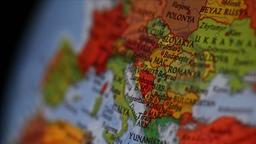Non-gold exports increased by 6.3 percent year-on-year in the first 10 months, about two times of that in 2012.
Here is the summary of my baseline scenario concerning the external factors that will affect Turkey’s economic performance in 2014: The Federal Reserve (FED) will taper and halt the third quantitative easing by the late 2013 or early 2014. The Republican Party and the Democrat Party will have a conflict on any occasion concerning fiscal policy but each time will reach deal in no time (by the way, we saw the first one of the deals last Thursday). The European Central Bank (ECB) will not carry out quantitative easing via bond purchases. It might cut the policy rate down to zero. The European Union and the Middle East and North Africa will grow at higher rates compared to 2013. The price of the crude oil will be slightly lower than 2013. Turkey’s foreign policy will not be more problematic than it was in 2013. The contribution of the public sector to GDP growth will not be as strong in 2014 (this is in line with the third quarter GDP released recently).
I have stated my exchange rate, inflation, and GDP growth forecasts together with my reasons: the lira will depreciate in real terms. Average CPI will be higher than the 2013 levels and will probably be in between 7.5 percent and 8.5 percent. GDP growth will be slightly below the 2013 rate which is expected to be 4 percent or slightly smaller. 3.5 percent might be a reasonable forecast.
The real depreciation of the lira on the one hand and the income growth in our export markets on the other hand will improve Turkey’s non-gold export performance compared to 2013. Non-gold exports increased by 6.3 percent year-on-year in the first 10 months, about two times of that in 2012. In this line, we can expect a 10 percent increase in non-gold exports in 2014. Non-gold imports will probably increase at a smaller rate than in 2013 since growth will be weaker, the lira will depreciate in real terms, and crude oil prices will diminish slightly. As a result, we can expect a moderate recovery in the current account. Assuming that current account deficit in 2013 will be 7.5 percent of the GDP, this rate might decrease to 7 percent or slightly below in 2014. Unemployment rate will probably vary around 10.5 percent.
All these forecasts are valid on the condition that my baseline scenario holds. There are critical uncertainties in the air. To restate a few among these: the first is one we are fed up with: when will the Federal Reserve (FED) tighten its monetary policy and what will the degree of the tightening be? Will the response to the tightening be more severe than anticipated or will the financial markets take it in their stride? Will the ECB pull another rabbit out of its hat and initiate monetary expansion? Will the decline in the price of crude oil be limited?
The baseline scenario can be modified on the basis of the answers. As I always do, I will introduce a worst-case and a best-case scenario and discuss to what degree the above forecasts would change under these scenarios.
This commentary was published in Radikal daily on 14.12.2013





